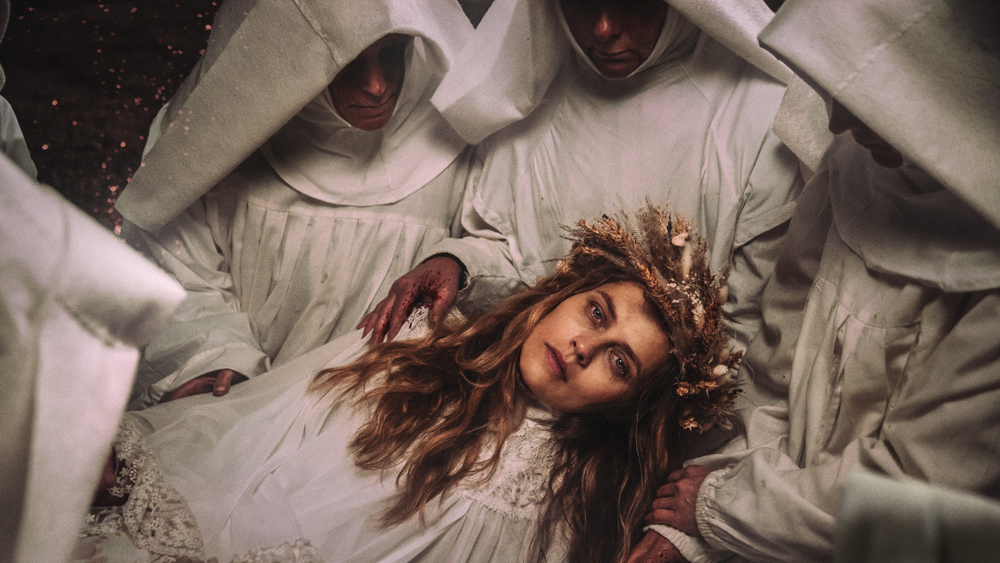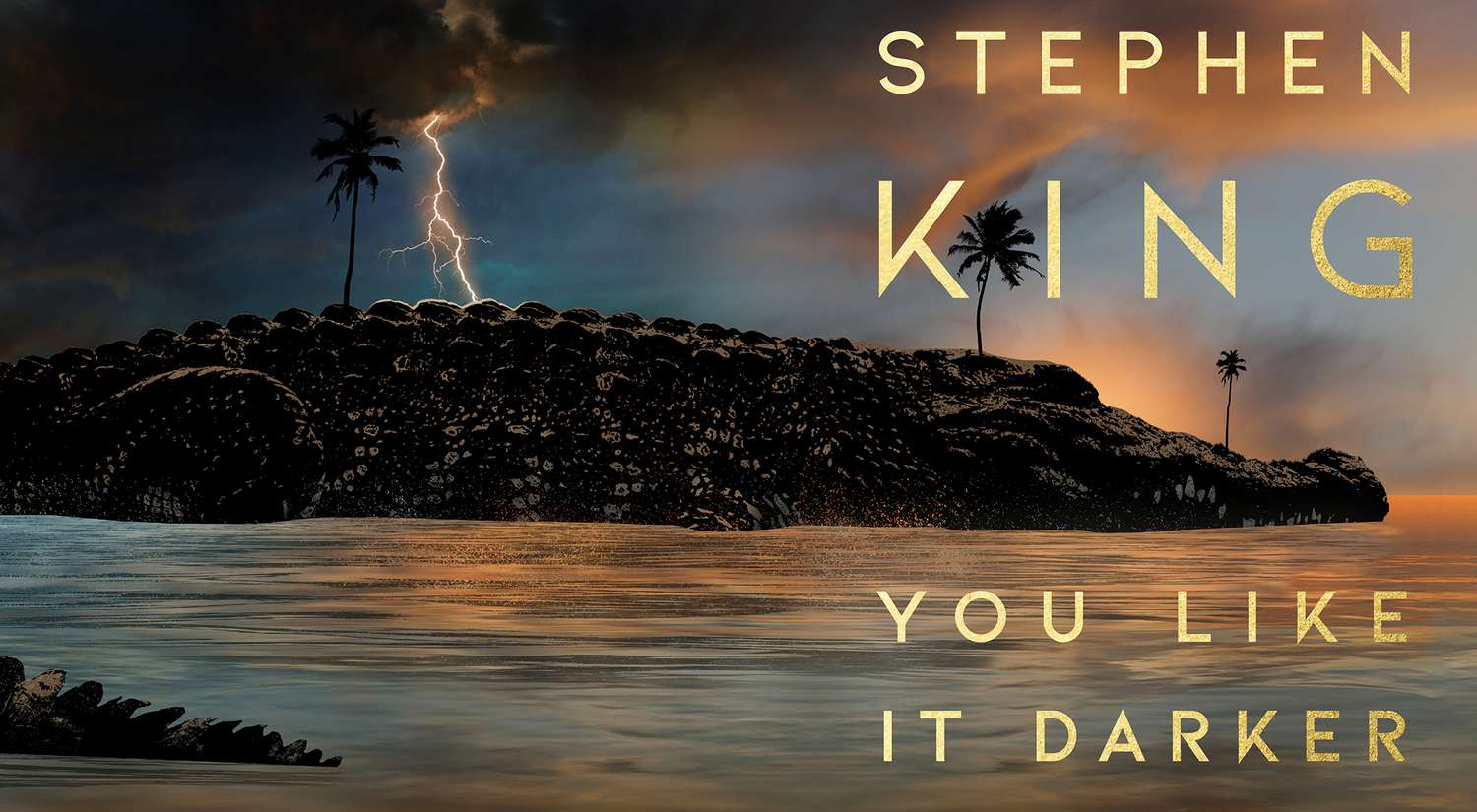Reviews
‘The Twin’ Review – Maternal Nightmare Gets Too Caught Up in Its Destination

Bloody Disgusting’s The Twin review is spoiler-free.
Gaslighting and paranoid isolation frequently come into play in horror movies centered around motherhood. Everything about The Twin‘s premise teases more of the same. Director and co-writer Taneli Mustonen (Lake Bodom) aims to subvert that formula by infusing it with folk horror and a few narrative sharp turns. But it’s so fixated on the destination that the journey getting there is a struggle.
After an idyllic drive through the countryside ends in tragedy, Rachel (Teresa Palmer) and Anthony (Steven Cree) bury their son Nathan in New York and then relocate with their surviving son Elliot (Tristan Ruggeri) to the quiet Scandinavian countryside to heal. It doesn’t take long for Elliot to begin behaving peculiarly or for Rachel to notice the locals’ ominous, ever-watchful presence. The more mistrust grows as the locals seem to close in, the more desperate Rachel becomes to unravel the truth about the sinister forces that targeted Elliot.

Mustonen, who co-wrote with Aleksi Hyvärinen, plays things close to the vest throughout. Setting the story almost entirely post-grief removes any chance of getting to know this family’s dynamic before the loss, of who they were before the crash. That’s intentional, of course, but it does make it challenging to find a foothold when Rachel begins her emotional arc already in an exaggerated state that never wavers beyond a straight line of constant duress. Whereas Rachel is the volatile, overbearing doting mother, her husband Anthony is distant and aloof, often retreating to his office for drinks while listening to Rachel’s battles with Elliot lashing out. There’s a flatness to both central characters.
Then there are the red herrings and strange visual clues. The early transition scene that sees Rachel and Anthony burying their son is set against a cityscape featuring the World Trade Center. There seems to be no actual significance to placing the narrative in this period other than to use the Twin Towers as a not-so-subtle hint in a horror movie titled The Twin. The Twin is full of enigmatic clues that don’t click into place until much later, and even then land with a thud.
How Mustonen layers in the folk horror raises visual interest, complete with Pagan rituals and Baphomet induced nightmares, but it’s all kept at a deliberate distance. Everything gets framed from Rachel’s perspective to maintain the mystery, drawing it out as long as possible. The third act finally brings the big picture into clear view, but the logical leaps and shortcuts it took to get there mean minimal impact. Worse, it underscores how much of what came before was unimportant filler and questions character choices and motivations.
The setting and Daniel Lindholm‘s cinematography at least capture the natural beauty of the Finnish countryside, but it’s not enough to sell the intended atmosphere. Mustonen’s attempts to subvert familiar tropes and clichés are over reliant on an ending that doesn’t entirely feel earned, wholly undermining its characters. Supporting player Barbara Marten injects a needed spark of life as ally and neighbor Helen, but even she, too, gets undercut for the sake of the payoff. In the end, The Twin is all fakeouts, devoid of scares.
The Twin premieres on Shudder, in theaters, on VOD and digital on May 6, 2022.


Books
Stephen King’s ‘You Like It Darker’ Finds Beauty and Hope in Nihilistic Horror [Review]

Stephen King may be known for epic novels like It and The Stand, but many Constant Readers first met the Master of Horror through his short fiction. Beginning with the iconic 1978 collection Night Shift, the best-selling author has been dazzling us for decades with short stories overflowing with sickening gore, fantastical creatures, meticulous violence, and transcendent joy. King follows suit in You Like It Darker, a jaw-dropping collection of twelve terrifying tales, five of them previously unpublished. Inspired by Leonard Cohen’s “You Want It Darker,” the outstanding tome dives head-first into the brutal randomness of pain and destruction – a “lullaby for suffering” only King can deliver.
The collection kicks off with “Two Talented Bastids,” a poignant story about an elderly author and his less talented son. Laird Carmody is a small-town Mainer who prizes his quiet life among the locals – a thinly veiled reference to King himself. The sprawling tale eventually uncovers a chance encounter that may hold the key to creative power. King’s most meta narrative to date, the story features references to the author’s real life including frequent visitors to his famous front gates, recollections of press-tour engagements, and allusions to longer “door stopper” novels. We’re also treated to line edits and sample paragraphs that offer additional peeks into the accomplished creator’s personal process. It’s a winding road both eerie and aspirational that sees the world-famous author grapple with his own unparalleled success while confronting us with the horror of unfulfilled dreams.
Most notable in this impressive collection, “Rattlesnakes” revisits one of King’s most brutal books. A sequel to the 1981 novel Cujo, this gut-wrenching tale catches up with Vic Trenton as he mourns for his late wife Donna – the flawed, but courageous mother who once battled a rabid dog to save the life of her child. On Rattlesnake Key, Vic meets another grieving mother still recovering from the horrific death of her own twin sons. Each day she lays out matching children’s clothes then wheels their long-dead spirits around in a squeaky pram while insisting that while she knows they’re not really there … sometimes they are. Pairing perfectly with the grisly story of a rabid dog, “Rattlesnakes” features moments of stark terror and shocking gore. Both heartbreaking and horrific, this sun bleached novella delivers a bloody bite reminiscent of King’s early career along with a harrowing warning against holding on to the past.
In addition to Cujo, King references iconic pieces of his extensive catalog. Easter Eggs abound as we revisit Derry, Castle Rock, and Dark Score Lake, sprinkled among familiar monikers and other deep cut references. King’s faux tabloid Inside View makes an appearance along with another haunting locale. Duma Key features prominently in two stories, making a literary return trip feel within tantalizing reach. The cover’s sinister alligator references “Laurie,” a touching story that careens headfirst into terror. Most of the collection’s horror occurs in bright daylight, reminding us that while we may survive the dark, we’re never truly safe. It’s King’s version of a beach read – bleak horror unfolding in the relentless sunshine.
Falling fourth in the collection, King’s other novella is slightly less successful. “Danny Coughlin’s Bad Dream” chronicles an extended nightmare as the titular janitor dreams about, then discovers, a dead body. Playing with the horrors of the criminal justice system, King follows a wrongfully accused man tormented by an obsessive detective convinced of his guilt. Similar to his 2018 novel The Outsider, the lengthy story unfolds like a confounding episode of Law & Order, eschewing supernatural scares for “ripped from the headlines” horror. King hints at racial and gender-based discrimination, but stops short of fully examining the larger implications of this disturbing premise.
While none of the collection’s twelve tales fall flat, some feel more developed than others. “Finn” and “Red Screen” both present ominous ideas, but offer little more than snapshots of larger terror. “On Slide Inn Road” and “Willie the Weirdo” follow unpleasant older men bonding with a younger generation – King’s version of generational trauma. Harkening back to the unflinching horror of the author’s earlier career, both are admittedly fascinating in their sheer nastiness and cruelty, however, they lack the emotional punch of the collection’s longer tales. “The Fifth Step” will likely prove terrifying to those in Alcoholics Anonymous while “The Turbulence Expert” will play on existing fears of airline travel. However, both stories feel slight and may not evoke the same powerful response in readers without similar life experiences.
The collection’s penultimate tale may also be its most classically scary. “The Dreamers” follows a magician turned mad scientist who documents research of a world beyond our own. Pure Lovecraftian horror, grisly nightmares reach into the waking world as test subjects dream of an eerie red house with a green door. It’s shocking horror and nihilism at its best, reminiscent of King’s 2014 novel Revival. “The Dreamers” confronts us with unsettling answers to what it all means and a frightening reminder that ignorance may provide safety as well as bliss.
You Like It Darker concludes with one of the most beautiful and upsetting stories of King’s career. “The Answer Man” follows a likable everyman through his adult life marked by three encounters with a mysterious salesman offering answers to any question. But what is the true cost of ultimate knowledge? Does peering into the future give us power or pain? A perfect capper to this poignant collection, King fittingly references a question first presented in his darkest novel, Pet Sematary. What is the meaning of life and what can we expect at the end of our days? King attempts to provide what answers he can while grappling with larger truths forever out of reach.
A bloody tapestry of nihilism and hope, You Like It Darker makes peace with the randomness of suffering and the horror of human fragility.
You Like It Darker will be released on May 21, 2024.


!['The Twin' Trailer - Teresa Palmer Gives Birth to Evil [Video]](https://i0.wp.com/bloody-disgusting.com/wp-content/uploads/2022/02/Screen-Shot-2022-02-17-at-10.16.50-AM.png?resize=740%2C434&ssl=1)













You must be logged in to post a comment.